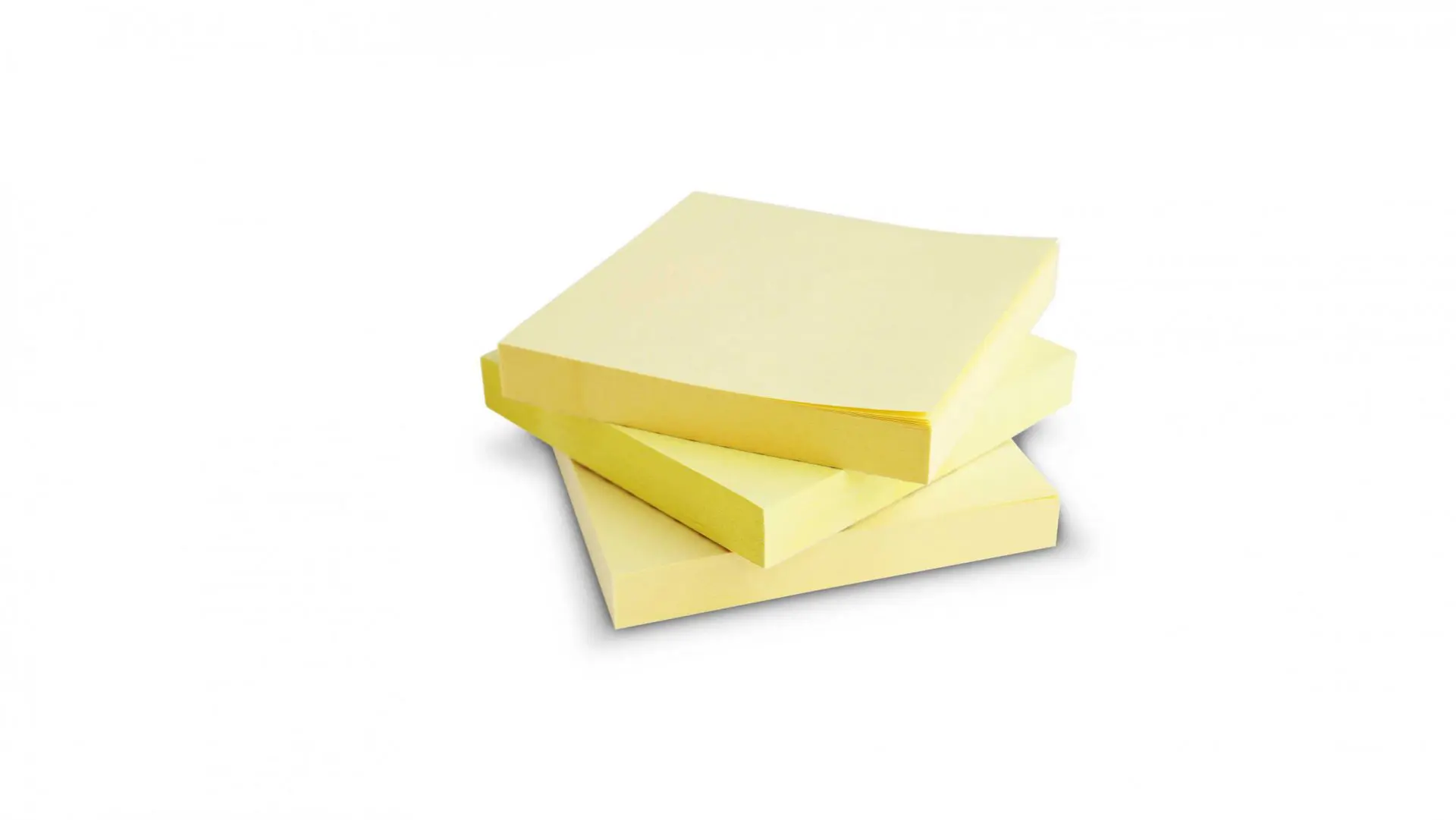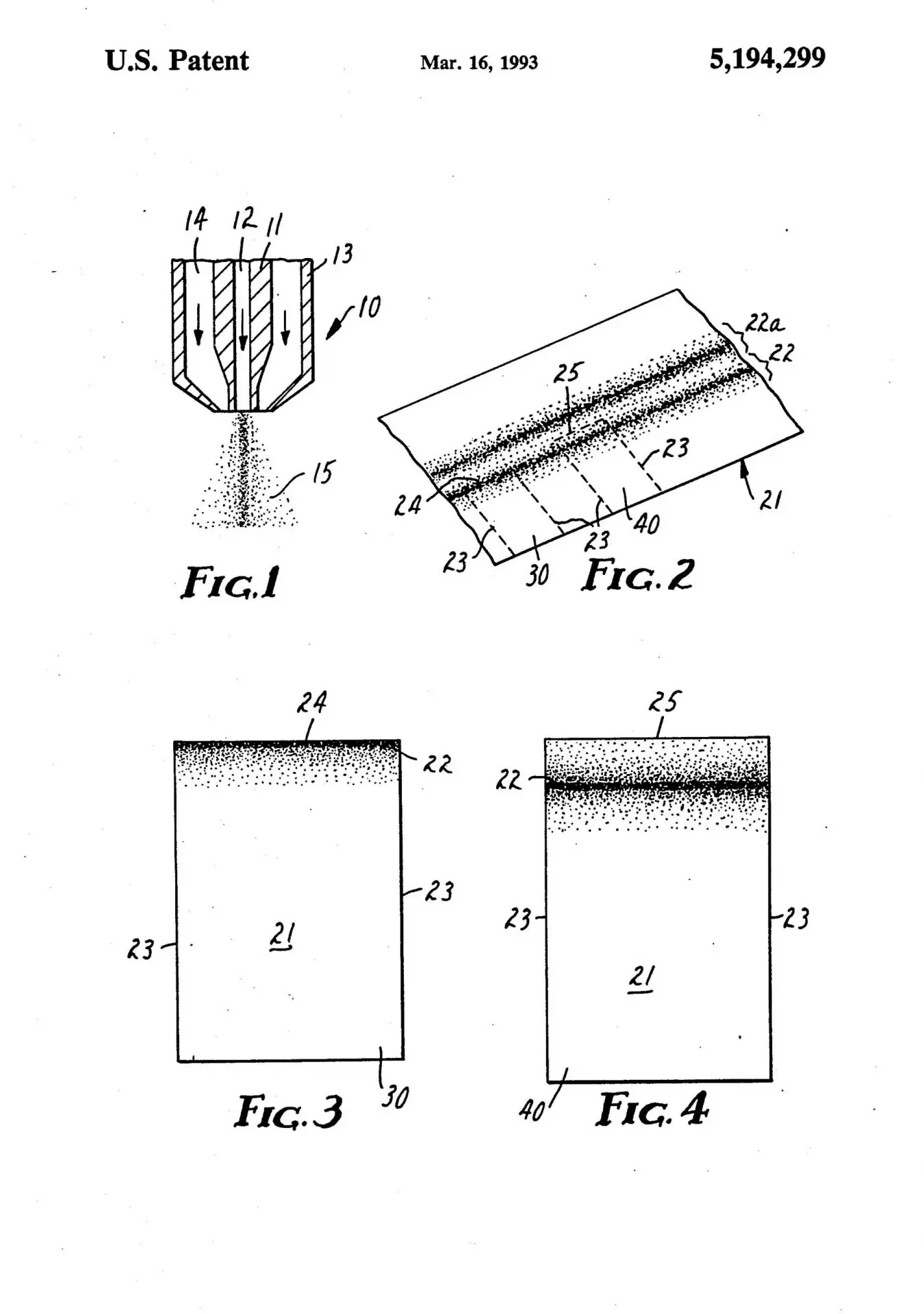The Post-it: An idea that stuck thanks to an accidental invention

A sticky adhesive and a humble pad of paper giving physical form to your thoughts and ideas.
For over forty years, the Post-it has been a stationary hero and an office staple, helping people be more productive and express themselves through quick and stickable scribbles and notes. A modest invention born from not one but three accidents. With a weak adhesive at the base of it, unfit for its original purpose, why then, have post-it notes stuck around so long?
Pull, stick, and repeat. Using these sticky little squares is as simple as their design.
A 1993 patent describes them best as a “sheet material [with the] ability to be applied to paper and removed therefrom [with a] pressure-sensitive adhesive.” The result is a non-repetitive pattern of physical thought bubbles, all thanks to a lightweight paper and an adhesive strip that lines each piece.

A happy accident (or three)
Their invention is thanks to a Dr. Spencer Silver, a 3M scientist who in 1968 was busy researching adhesives in an attempt to find a super strong glue for use in aircraft construction.
Instead, by mistake, he discovered the opposite, a weak adhesive using something called acrylate copolymer microspheres. This adhesive was weak and pressure-sensitive, with the unique characteristic of being incredibly strong and resistant but easy to remove without leaving any residue behind. This was the first accident.
The second accident was that of another 3M scientist, Art Fry, who every Wednesday practiced with his church choir using little scraps of paper to mark the hymns. His genius was to use Silver’s adhesive on paper and use it as a bookmark. With this idea he partnered with Silver and together they developed a bookmark-cum-sticky note and a whole new way of communicating.
The third and final accident was the colour of the original post-it, a canary yellow chosen by happenstance – a lab next door only had scrap yellow paper on hand.
Find out more about revolutionary stationery products, don’t miss Bic Pen: A cheap design that changed the history of writing.
A slow start
Even after this eureka moment 3M didn’t believe in the value of the product. Without much support it took almost a decade of convincing and product development before 3M launched it and only in four cities under the name Press ‘n Peel.
Sales were scarce, so 3M then decided to send them out as free samples and see if companies wanted to re-order. They did. And not before long post-it notes were everywhere.
It’s hard to imagine how many post-it notes have been sold over the years but today more than 1,000 post-it products are sold in 150 countries. Since the product’s introduction, 3M has developed over 20 different types, including “extreme” Post-its suitable for tough and wet conditions, and apps that simulate and digitize analog Post-its.
Not limited to office walls or between the pages of school books, post-its are also prolific in art and design. In 2004, Paola Antonelli, Senior Curator of architecture and design at MoMA, included Post-it Notes in a show entitled “Humble Masterpieces“.
In 2000, the 20th anniversary of Post-it Notes was celebrated by artists like RB Kitaj and other notable figures like actor Stephen Fry, who created artworks on them.
Aside from their sticky start, on the surface Post-its seem without controversy and for the most part they are. That is aside from a battle over who actually invented them as old as the product itself.
An inventor called Alan Amron claims that he, and not 3M, invented the original sticky note and called it the Press-on memo, which he showed 3M executives in 1974 at a trade show in New York. 3M denies these claims and aside from this forty-year-long dispute, there have only been a few tricky issues along the way (in 1997, 3M sued Microsoft for trademark infringement for using the term “Post-It” in a help file).
Ultimately, the Post-it note changed the way people communicate, whether that’s a note to your future self, a bookmark in your favorite novel, or a quick scribble in the middle of class. The Post-it is a dynamic invention and an impermanent way of recording your thoughts and ideas, and who knows, maybe one of them will stick.
Curious to know about other inventions that made history? Head to The Monobloc Chair: A piece of white plastic for and against the world.








